© XAVIER RIBAS - La Relève (2008) Digital projection, 12 photographs, 3 flyers. Variable dimensions. Edition of 3 + 1 ap
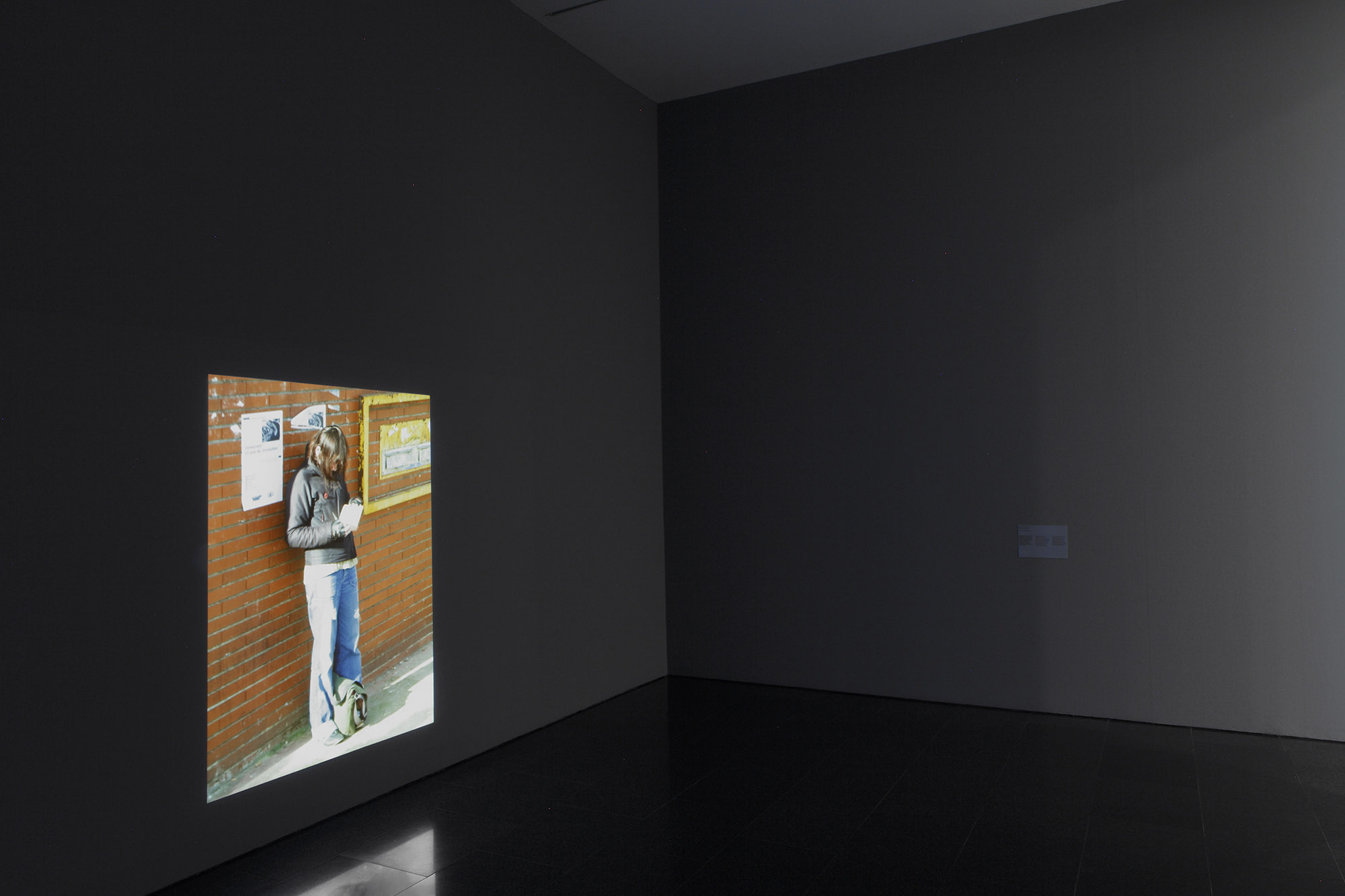
La Relève (part 3). Woman Reading a Book. Digital slide projection 3'14". Installation MACBA, 2014
[En]
"The moment in which the worker turns his back on work." Harun Farocki, Arbeiter verlassen die Fabrik (1995)
La Relève [Half Day Shift] was produced during an artist residency at the Université de Toulouse-Le Mirail in the winter of 2008. The central subject of this work is not the time of study nor the time students spend doing casual remunerated work to sustain themselves while at university. The images, instead, turn their attention to the space and time that exists between these two moments of production, where the transition between life on the campus and life in the city takes place; transitional moments and spaces where the university and the city short-circuit one another.
The precariousness of university student's life today is a direct consequence of rising tuition fees and the withdrawal of the state from supporting higher education. University students today get deeper and faster in debt, entering, as a result, the market of casual labour even before they finish their studies. As far back as 2006 the French university student union SUD was already warning of the existence in France of some 40,000 students practising sex-work on an occasional basis to support their studies. In the same year, research by Kingston University in London gave similar figures for the UK. In France as in the United Kingdom, the increasing precariousness of university life is perhaps more visible than in other countries, such as in Spain, where there has historically been less access to grants, and where student's life, those who do not have the financial support of their families, has always been precarious. On the other hand, the withdrawal of state involvement in university finances drives universities to operate like private enterprises: funding is perceived as investment, and knowledge production is measured in quantitative terms. This, inevitably, permeates into the choices of academic research and its dissemination through teaching. This double process, the precarisation of student's life and the corporatisation of universities, is a continuation of the peripheralization of university life that began in the 1970s as a strategy to delocalize and displace dissident knowledge formation and student movements out of the city centres.
The university campus at Toulouse-Le Mirail was created at the start of the 1970s following a new trend towards displacing combative faculties and student movements from the historical city centres. For example, in Toulouse, the Faculty of Humanities, now Université de Toulouse II, was moved to Le Mirail, a newly built neighbourhood on the periphery, while the Faculty of Law continued to be based in the original university building. After almost thirty years of existence of the Le Mirail campus, one can still see the radical scission between life on the campus and life in the city. But what is most striking about the immediate surroundings of the campus are not the empty plots typical of the urban peripheries, but the huge stone boulders which surround them and block all access to them. These massive blocks of stone transform the peripheral wasteland into a sort of condominium of underdevelopment, an excessive space managed as if it were under siege. The design of the campus, however, of its buildings and open spaces, its pergolas and walkways, evokes an architectural modernism which seems to belong more to the tropics than the cold French winter: a colonial reminiscence relocated to the “multicultural” periphery? This modernist architecture starkly contrasts with the raw matter of the wasteland and the boulders of the spaces outside.
The close proximity of these two types of spaces, the besieged wastegrounds and the heterotopic enclave of the campus, and all that they represent symbolically, generates hardly any overlap or interpenetration between neighbourhood and university. In Le Mirail, spaces of symbiosis or hybridity are scarce. Statistically the neighbourhood produces few young people that go on to university, and neither do many students choose to live there. Consequently, any social life students have in the area is limited to the cafes and fast-food restaurants to be found between the campus entrance and the underground station. The route from the campus to the underground is perhaps the main point of real contact between the university and the neighbourhood: some three hundred metres of street and a handful of coffee bars.
La Relève [Half Day Shift] was inspired by three works which represent “the moment in which the worker turns his back on work”: the film La sortie de l’usine by the Lumière brothers, made in Lyon in 1895; the series of photographs Labor Anonymous by Walker Evans, taken in Detroit in 1946; and Untitled Slide Sequence by Allan Sekula, made in San Diego in 1972.
© Xavier Ribas
This work was produced during an artist residency at the Université de Toulouse 2 - Le Mirail for the Mission Photographique Eurorégionale: "Images de Campus, Campus mis en Images". The work was first exhibited at the CIAM and published in a the catalogue Campus en ima[T]ges with the work of the other two artists in residency, Denis Darzacq and Mohamend Bourouissa.
---
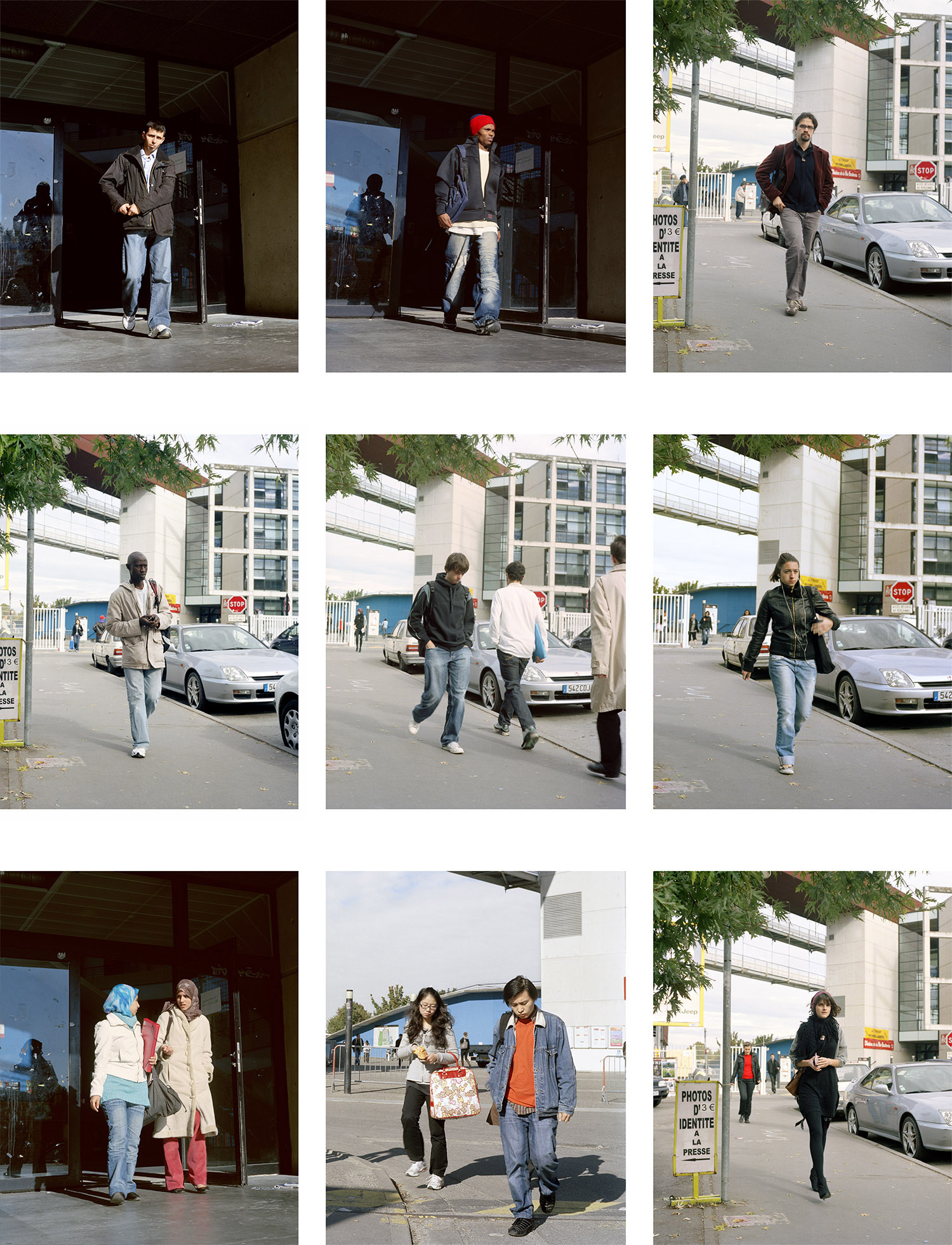
La Relève (part 1). Students Leaving the Campus. 11 photographs
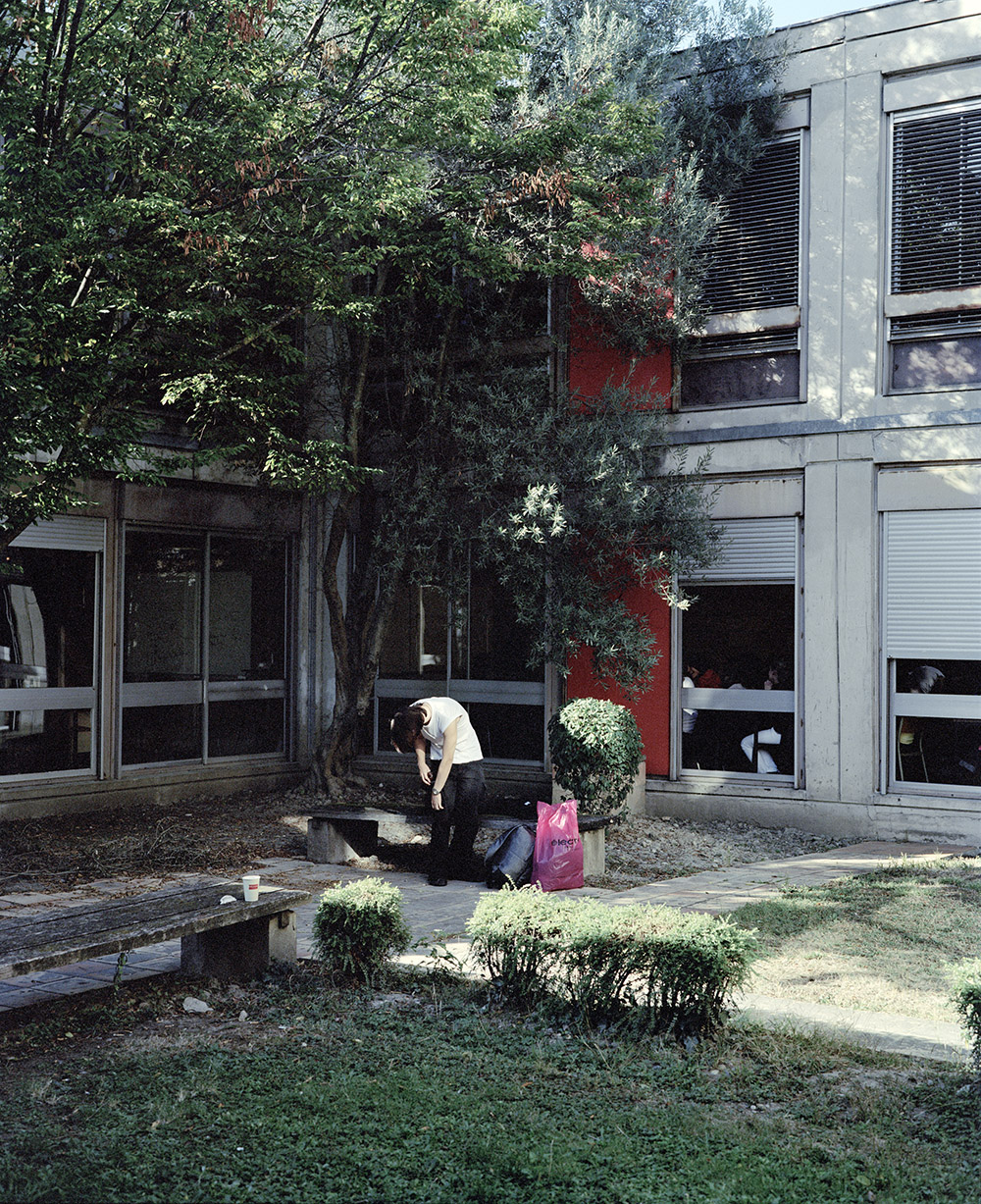
La Relève (part 2). In the courtyard
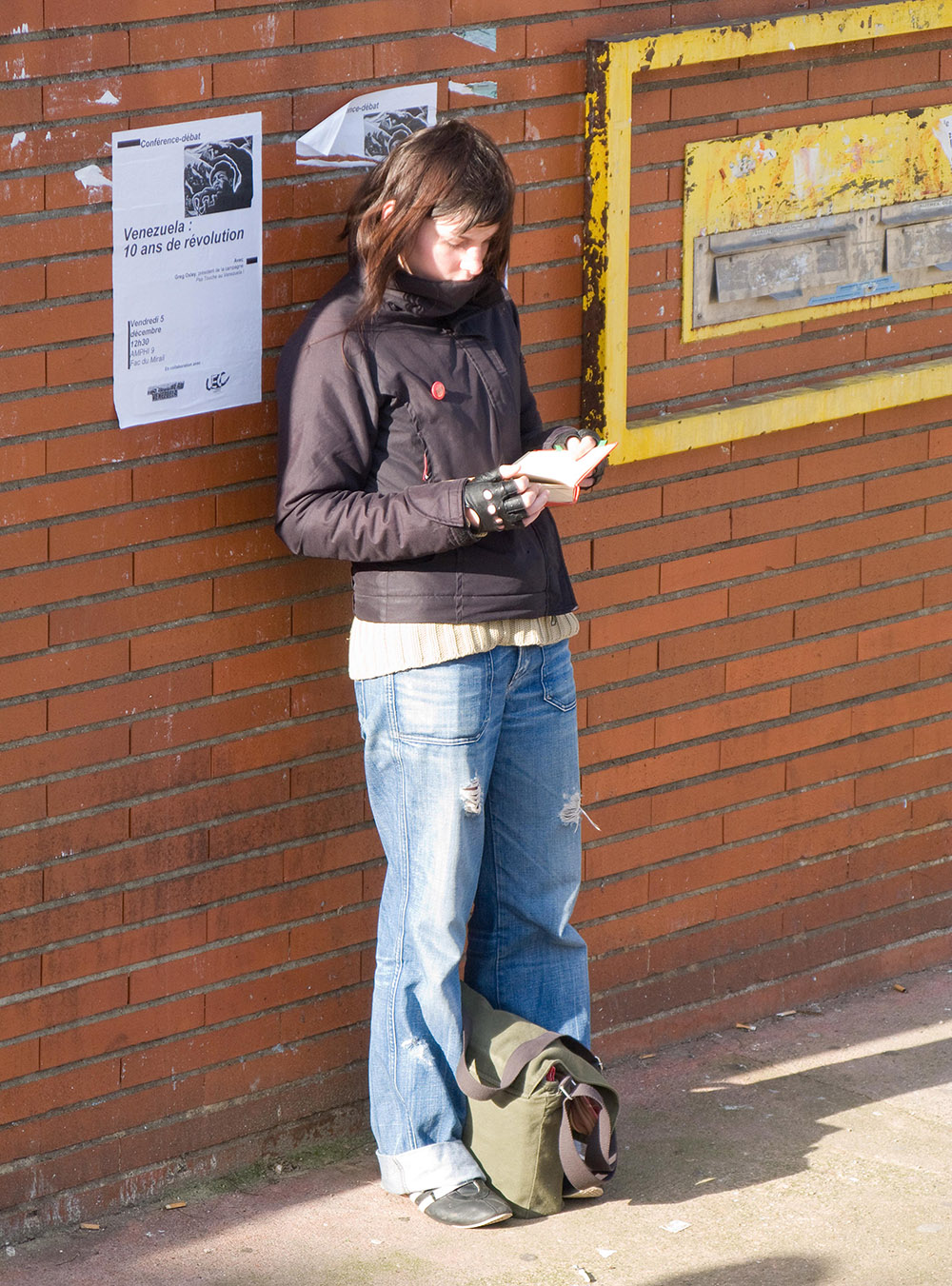
La Relève (part 3). Woman Reading a Book (Digital projection slide sequence)
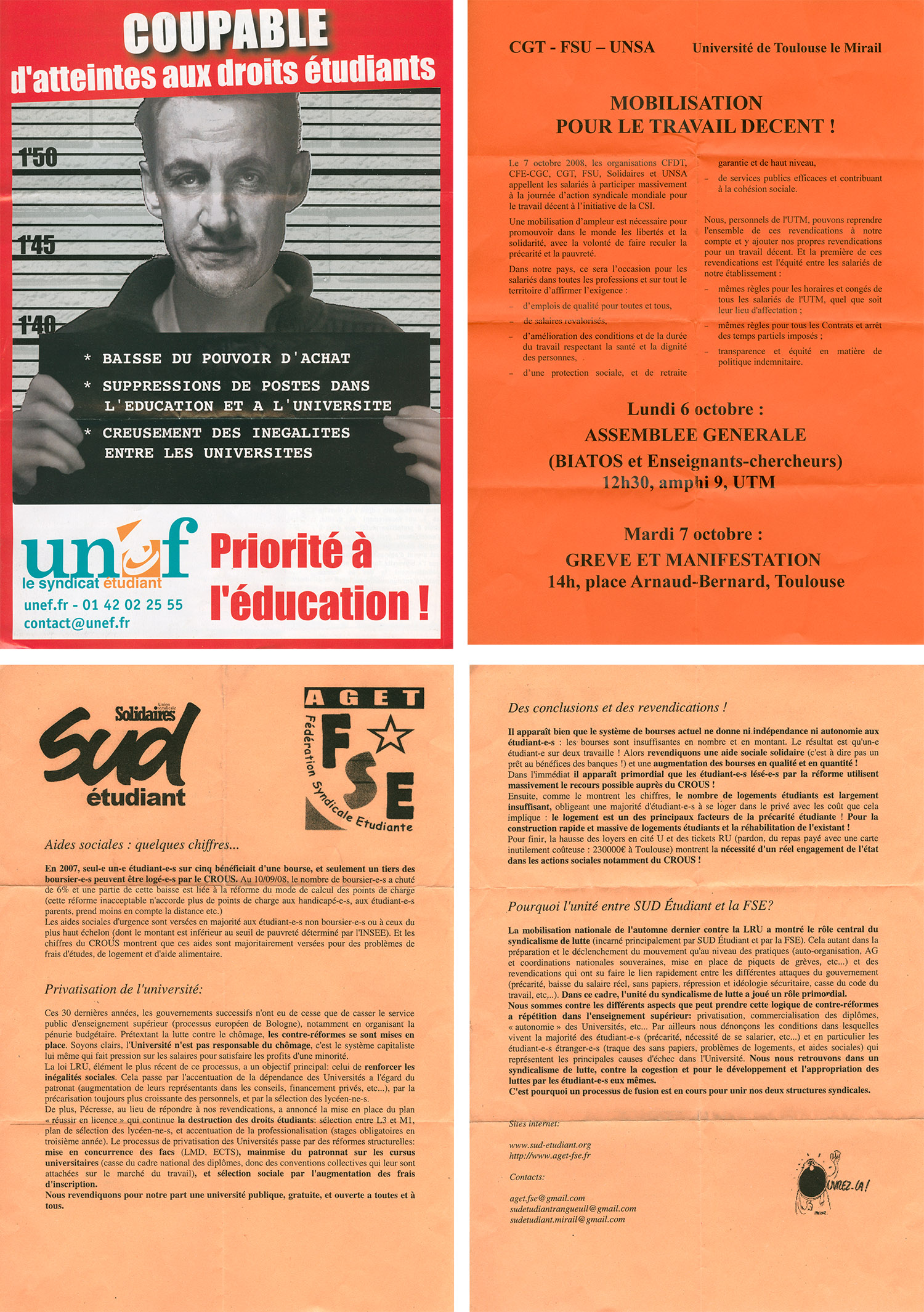
3 A4 flyers, Université de Toulouse 2 - Le Mirail, October 2008
---
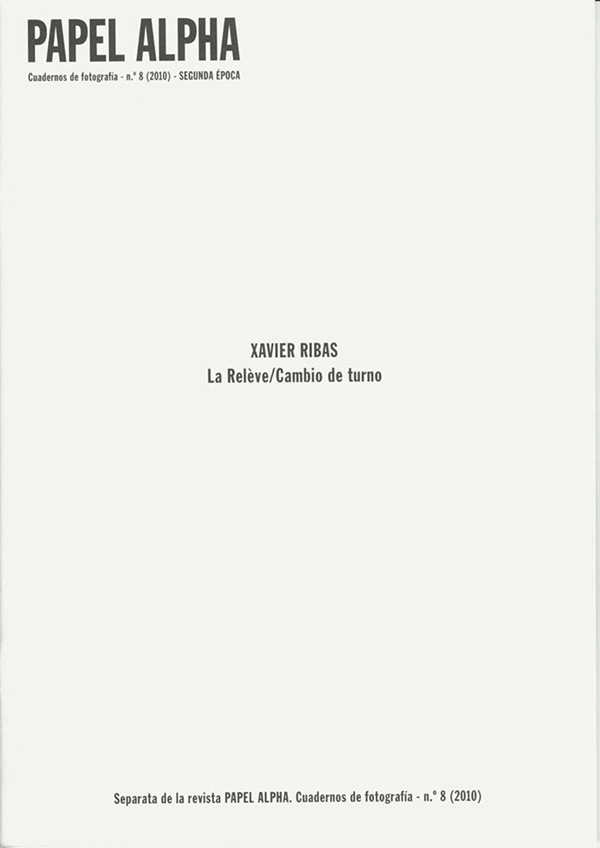
+
Related files
Xavier Ribas, "La Relève", Papel Alpha, núm 8, pp 111-127. Ediciones Universidad de Salamanca, 2008
PDF Xavier Ribas, La Relève [En] [Cat] [Cast] [Fr]
Campus en ima[T]ges. Denis Darzacq, Xavier Ribas, Mohamed Bourouissa. Délit éditions, March 2009.